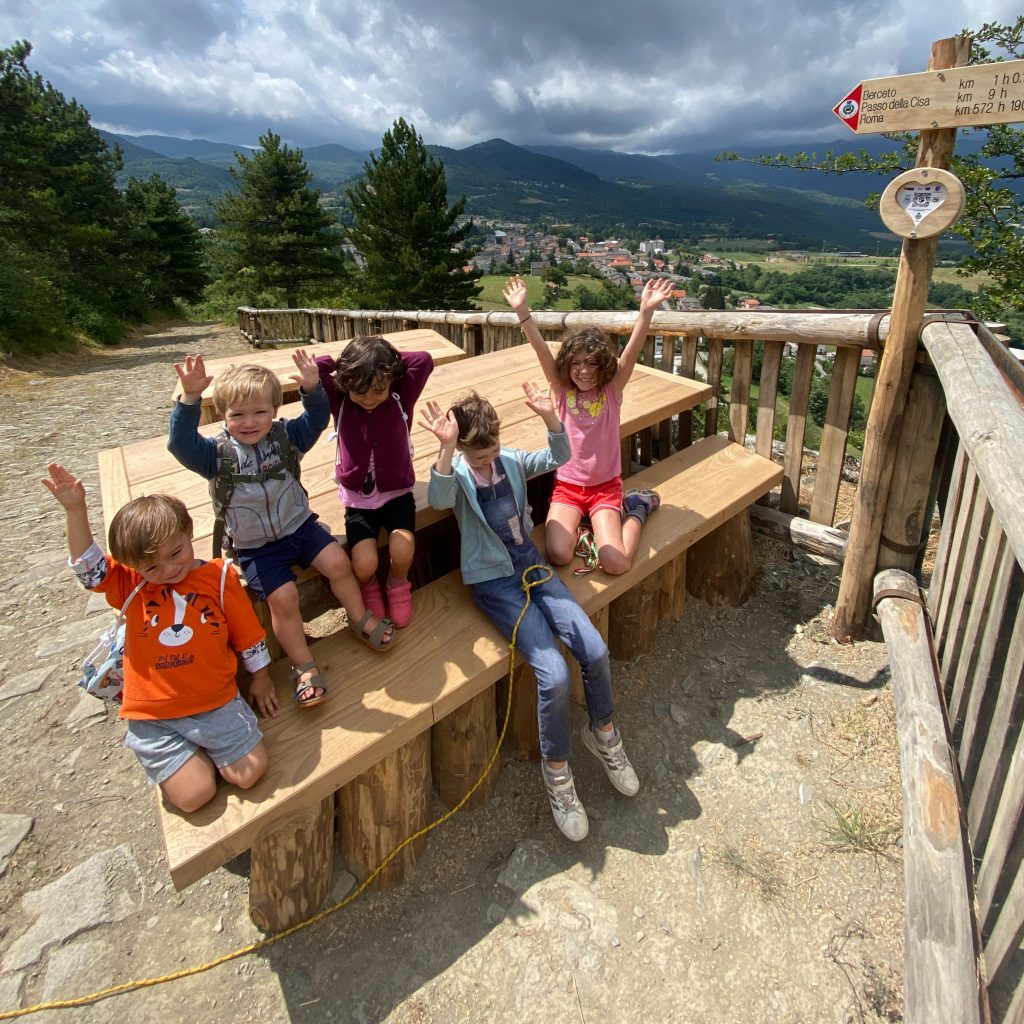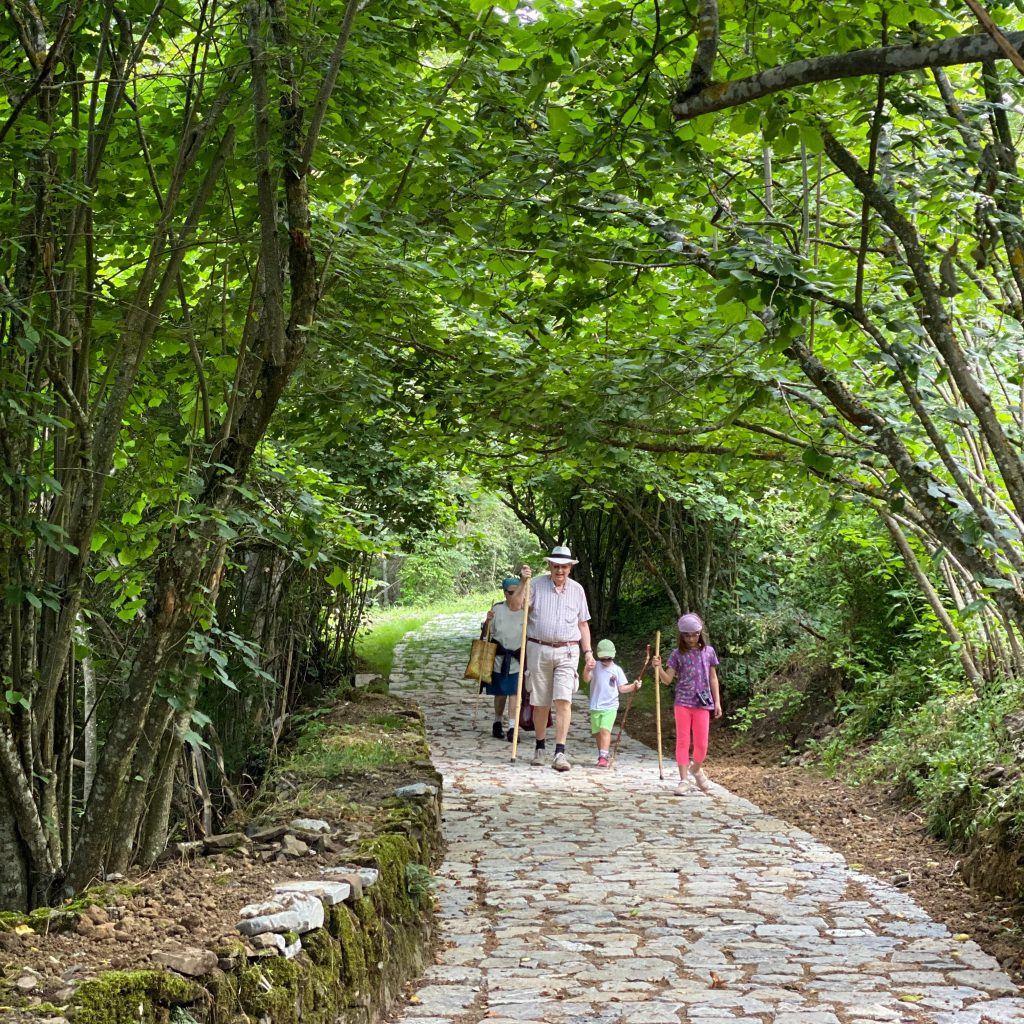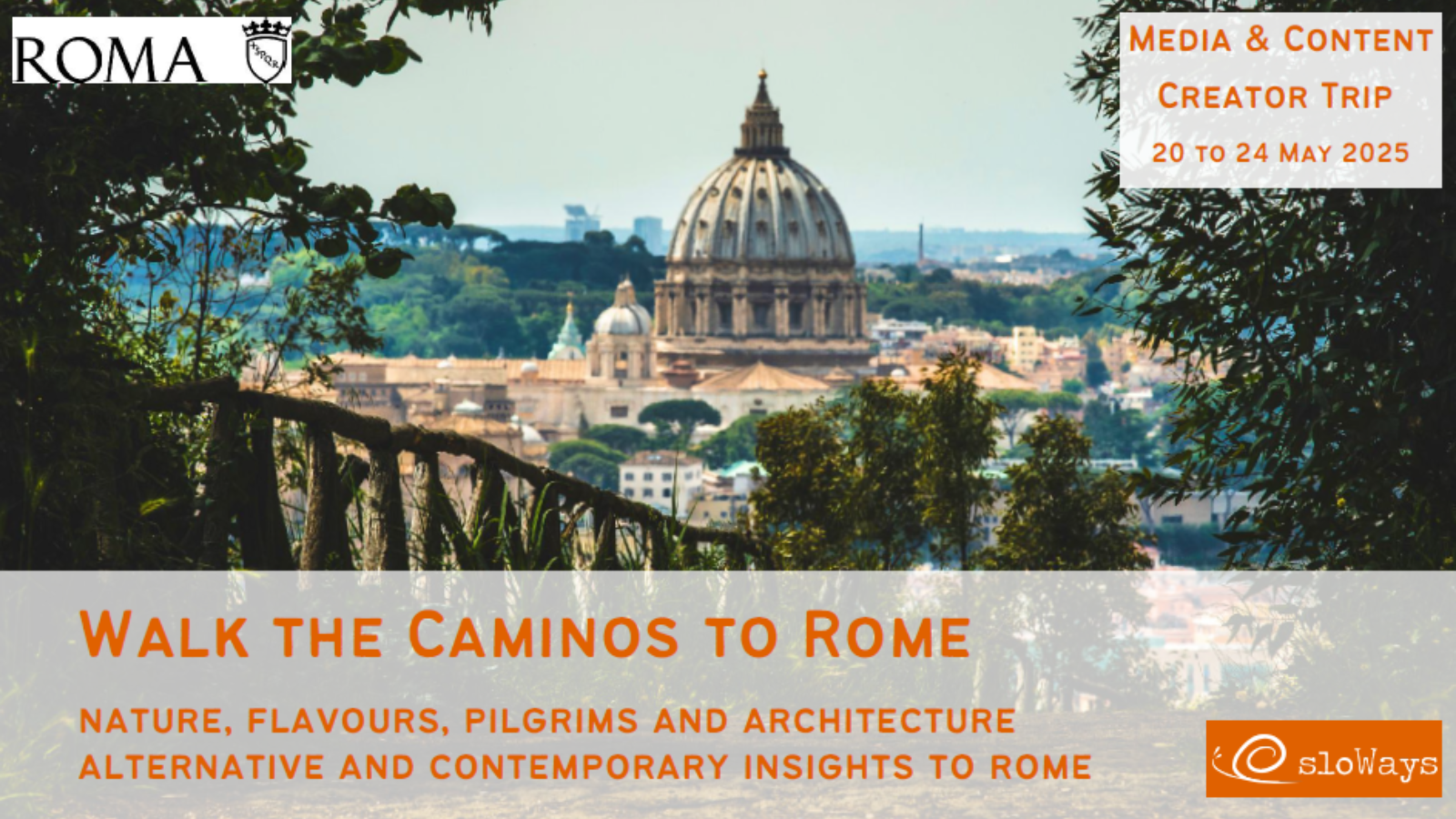On August 3rd, the presentation of the regeneration works of the historical route in Berceto, a higly symbolic place of the Via Francigena at the European level and with which AEVF is collaborating, took place. Works will involve securing the itinerary, signposting, integrated communication systems and the cleaning of the route.
The event was held at the town hall of the municipality, in the presence of the regional councillor for tourism and transport, Andrea Corsini. On this occasion, Mayor Luigi Lucchi presented the works and projects implemented thanks to Development and Cohesion Funds from the Ministry of Culture, under the coordination of the Emilia Romagna region. It’s a 100% non-repayable contribution of 262,093.92 euro.
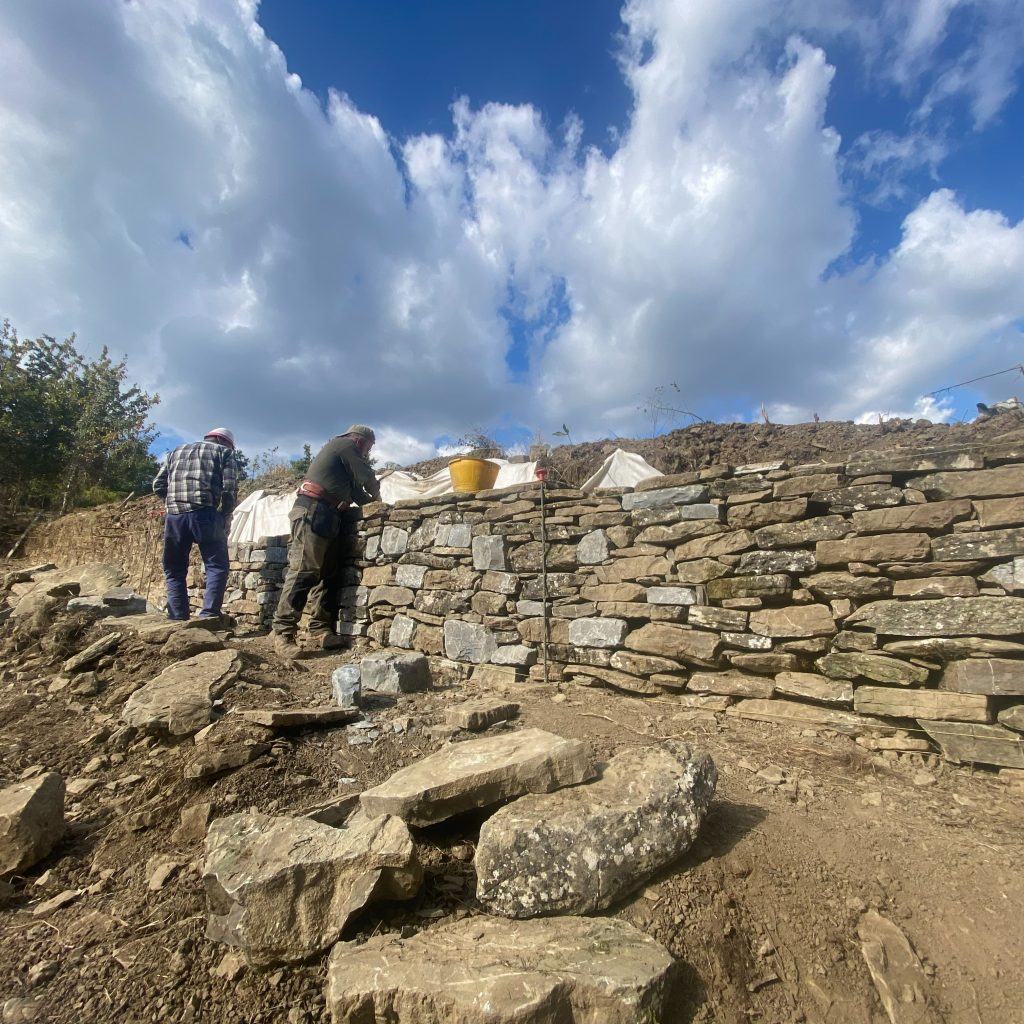

The Project
Emanuele Mazzadi, the project manager for the works, illustrated the improvements on the itinerary. These include cleaning weed vegetation and drainage. There are also plans to restore dry stone walls and ancient stone pavements made of sandstone from the nearby Cassio quarry. Finally, fountains and furnishings were set up to support the pilgrims.
All materials (stone, wood) were sourced in the immediate vicinity also to minimise the environmental impact of the project. The use of “dry” technology (without the use of mortar or cement) for the recovery of low walls and pavements meets two requirements. Respecting tradition and counteracting climate change. Indeed, dry walls, which are permeable, allow water to penetrate underground. They also recharge the groundwater and slow down the flow of surface water during very concentrated rainfall.
The indoor presentation was preceded by a walk to discover the beauty of Berceto. There was a visit to the cathedral and, above all, to the Ripasanta viewpoint, the pride of the area. Here the traditional ribbon-cutting’s ceremony took place, amidst the arches of hazel trees that accompany pilgrims arriving in the village.

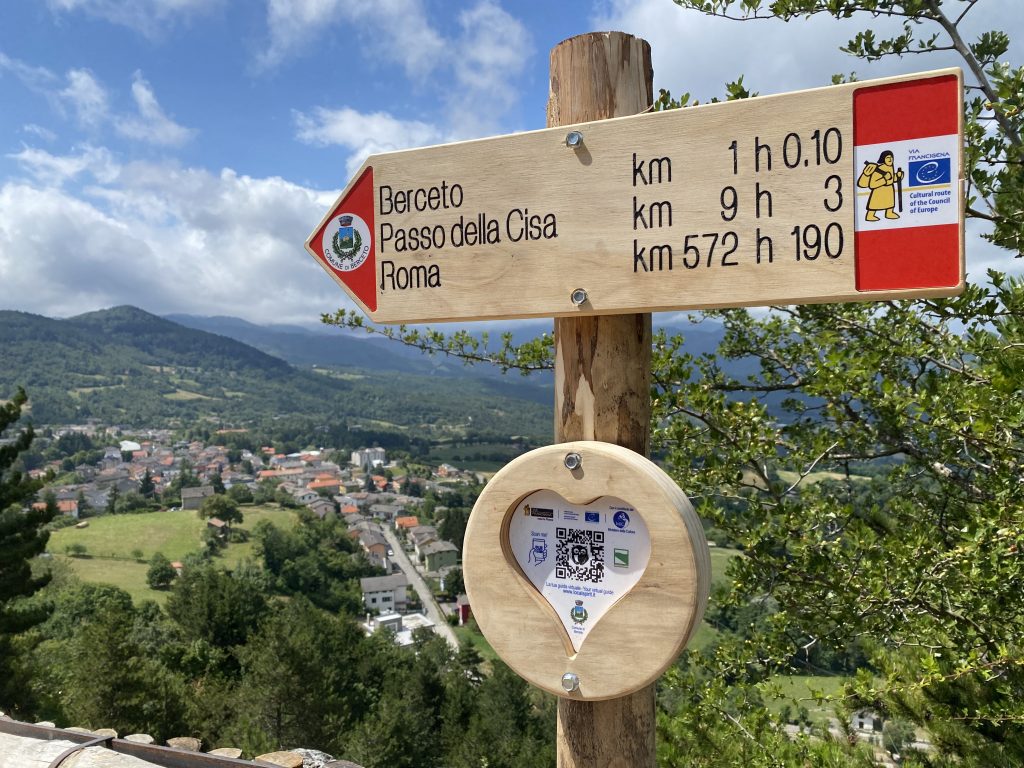

The signage
Particularly original is the signage, made of accoya. This wood comes from sustainably managed forests and is processed in a non-toxic way to make it more stable and durable. In addition, along with the CAI (Club Alpino Italiano) standard arrows indicating the distance from Rome to Canterbury, wooden hearts containing a QR-code have been made.
By scanning the code you get a ‘virtual guide’ on your phone that shows the walker the beauty of the various places they are visiting. The ‘virtual guides’, conceived by the project manager, were realised with the IT consultancy of Davide Galli for Net Wight and with the support of Berceto video-maker Giacomo Agnetti. Twenty of these ‘virtual guides’ can be found along the Via Francigena in Berceto and can be viewed at this link: https://berceto.localspirit.it/ .
It is a way of enhancing the territory, thanks also to the involvement of the ‘historical memories’ of the place. The ‘virtual guides’ include anthropologist Maria Molinari, geologist Giovanni Michiara and local history experts Giacomo Galli, Bruno Molinari and Aldo Torricelli. In September, work will begin on the recovery of the stretch of the Via Francigena in the municipality of Terenzo, where the ‘virtual guides’ will also be positioned: a way to tell the story of the area and to entice pilgrims to return to discover other beauties of our Apennines.
